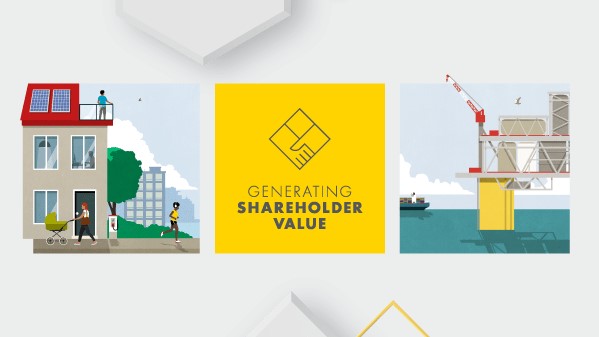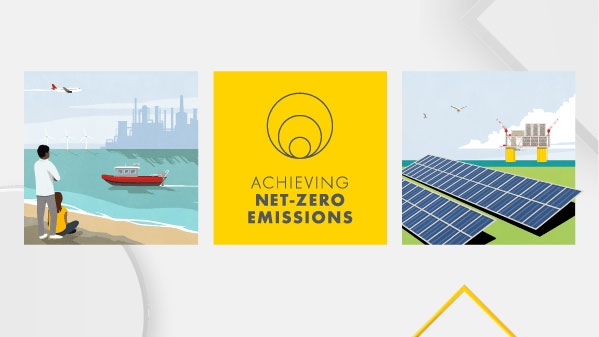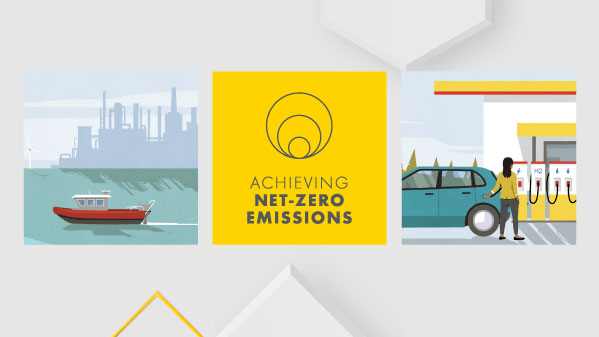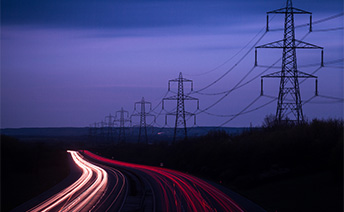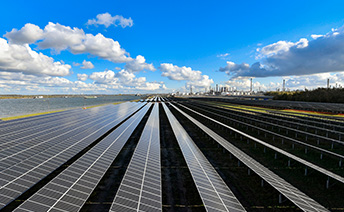Australian Energy Council (AEC)
AEC represents 20 major electricity and downstream natural gas businesses operating in the competitive wholesale and retail energy markets in Australia.[1] It is active in public debates to promote strategies, inform consumers and advocate for the industry.[2]
Membership of board/executive committee: None
- 2022 assessment outcome: Aligned
- 2021 assessment outcome: Not reviewed
Summary
Shell benefits from its membership of AEC, especially in relation to AEC’s work on energy market policy and regulation.
We welcome AEC’s Statement of Strategic Intent, published in September 2022, which emphasises AEC’s commitment to the energy transition and the role it intends to play in the development of policy frameworks to support reaching net zero by 2050.
We have found AEC to be aligned with our climate and energy transition-related policy positions.
We will encourage AEC to:
- Support improving energy efficiency through standards and regulatory instruments covering key sectors of the economy.
We will remain a member of AEC. We will continue to engage the association on climate and energy transition topics. We will continue to track alignment between AEC’s climate and energy transition-related positions and our own.
Further information
Click on the sections below to read more.
- AEC has stated support for reaching net-zero emissions by 2050, as well as an economy-wide 55% emissions reduction target by 2035, compared with 2005 levels.[3] [4] [5] [6]
- In 2022, AEC published its ‘Australia’s Energy Future: 55 by 35’ series of discussion papers that set out information and AEC’s views on the decarbonisation of a range of sectors.[7]
- In its August 2022 letter to the Senate Standing Committees on Environment and Communications, AEC stated its support for the federal government’s Climate Change Bill target of net-zero emissions by 2050.[8] AEC is also a member of the Australian Climate Roundtable that has stated support for the Climate Change Bill 2022.[9]
- AEC does not appear to have an explicit policy position on carbon pricing. However, in 2016 it stated “national market-based mechanisms are unequalled at discovering the cheapest and most efficient way of reducing greenhouse gas emissions in the electricity sector”; AEC has previously referred to market mechanisms as emissions trading schemes.[10]
- In 2022, AEC responded to the government’s consultation on Safeguard Mechanism Reform to reduce emissions in the industrial sector.[11] AEC stated: “While the AEC has previously pushed for national trading mechanisms inclusive of electricity (such as the previous government’s abandoned National Energy Guarantee), the need for such a scheme now appears unnecessary since the electricity generation sector is already so far advanced in its decarbonisation journey.”[12]
No position
- AEC has stated that green hydrogen is “both a potential substitute for liquid fuels and an emerging complementary technology to intermittent renewable energy”.[13]
- In 2022, AEC published ‘Australia’s Energy Future: 55 by 35 – Hydrogen’, a paper that considered the opportunities and challenges for emissions reduction using green hydrogen.[14]
- In its 2022 letter to Energy Policy WA, AEC expressed concern about the proposed Western Australia Renewable Hydrogen Target, stating that the target “is being progressed at pace without consideration given to whether it provides a benefit to consumers or market participants. The AEC considers that there needs to be reasonable justification for pursuing the Renewable Hydrogen Target, and a feasibility study completed, before work commences on detail design and it is submitted to Cabinet.”[15]
- In its December 2021 letter to the Australian Markets Commission, AEC did not support the proposed review scope or timing of the regulatory frameworks for hydrogen and renewable gases.[16] AEC stated that it “believes strongly that hydrogen will have a future role to play in Australia for each of: Heavy transport; Industrial Process Heat and Feedstock, and Gas-powered generation (GPG). In considering hydrogen for use in the gas distribution network for cooking, space heating and hot water (households and businesses using reticulated gas), the AEC doubts that the overall economic benefit will be positive.”[17]
No position
- AEC has stated support for funding of carbon capture and storage (CCS).[18]
- AEC has stated support for transparency and for the overall intent of the Corporate Emissions Reduction Transparency (CERT) reporting initiative.[19]
- With reference to coal power closures, AEC has stated the need for an “orderly exit so reliability, affordability and security are not adversely impacted”.[20]
- AEC commissioned a Just Transition report, published in 2022, that considers just transition issues related to the retirement of coal power in Australia; the report states “proactive and timely transition planning in the years preceding the closure is absolutely necessary for success.”[21]
- In December 2021, the AEC called “for more focus on coordinated planning for an orderly exit from coal and maintaining Australia’s energy security.”[22]
- In October 2022, AEC announced that it believed “the Victorian Government’s election platform to reinstate the State Electricity Commission and expedite the exit of coal plant from the state will damage market and investor confidence.”[23]
- AEC has stated support for electrification with renewable or low-carbon power.[24] [25] [26]
- In its 2022 Statement of Strategic Intent, AEC states it “will collaborate with other sector representatives to further the electrification of more sectors of the economy” and will support and promote the role electricity can play in achieving emissions reduction goals.[27]
- In 2022, AEC published ‘Australia’s Energy Future: 55 by 35 – Electrification and Heat’, which considered the application of electrification to a range of sectors.[28]
- AEC has stated support for natural gas as a partner for renewables and that it believes hydrogen will have a role to play in power generation.[29] [30] [31]
- AEC has not stated a position on methane emissions regulation or ending routine flaring. However, it has commented on the policy challenges the Australian government will need to consider following its signing of the Global Methane Pledge.[32]
- In 2022, AEC published ‘Australia’s Energy Future: 55 by 35 – Decarbonising Transport’ which stated that “it has become increasingly clear that the way to reduce emissions for this segment is through a switch to electric vehicles.”[33] In the paper, AEC discusses EV projections and notes “there may be few non-EV models available by 2035.”[34]
- In its October 2022 letter to government about the National Electric Vehicle Strategy, AEC stated that it “acknowledges that the widespread adoption of electric vehicles (EVs) will contribute to the alleviation of problems such as environmental pollution, global warming and foreign oil dependency”.[35] It has provided policy recommendations regarding smart charging and grid impacts.[36]
- In 2022, AEC published ‘Australia’s Energy Future: 55 by 35 – Decarbonising Transport’ which stated “for larger vehicles the options are more complex. Electric drivetrains and batteries appear to have less of an advantage the larger a vehicle gets. So, biofuels or hydrogen are more likely to play a role for trucks, trains, ships and planes. In most cases there is still some prospective electrification option too.”[37]
- In 2022, AEC published ‘Australia’s Energy Future: 55 by 35 – Electrification and Heat’ which states “electrification of industrial heat will be critical to reduce emissions by replacing fossil fuel combustion with renewable generated electricity.”[38] In its 2022 paper ‘Australia’s Energy Future: 55 by 35 – Hydrogen’, AEC notes that options include “using green hydrogen in steel reduction, to fuel cement kilns and alumina refineries and to replace gas as a feedstock for ammonia production”.[39]
No position
No position
[1] https://www.energycouncil.com.au/about-aec/
[2] https://www.energycouncil.com.au/about-aec/
[3] http://www.energycouncil.com.au/
[4] https://www.energycouncil.com.au/media/2dubnvua/introductory-discussion-paper.pdf
[5] https://www.energycouncil.com.au/statement-of-strategic-intent/
[6] https://www.energycouncil.com.au/news/aec-welcomes-the-appointment-of-the-hon-chris-bowen-mp/
[7] https://www.energycouncil.com.au/media/2dubnvua/introductory-discussion-paper.pdf
[8] https://www.energycouncil.com.au/media/0zwlabzj/20220810-aec-submission-to-climate-change-bill.pdf
[9] http://www.aigroup.com.au/globalassets/news/submissions/2022/australian_climate_roundtable_climate_change_bills_august_2022.pdf
[10] https://www.energycouncil.com.au/news/market-based-policy-for-climate-still-the-way-to-go-1/
[11] https://www.energycouncil.com.au/media/rlwkpaud/20220920-aec-submission-to-safeguard-mechanism-reforms.pdf
[12] https://www.energycouncil.com.au/media/rlwkpaud/20220920-aec-submission-to-safeguard-mechanism-reforms.pdf
[13] https://www.energycouncil.com.au/media/dm2dkjc3/aec045-hydrogen-discussion-paper.pdf
[14] http://www.energycouncil.com.au/media/dm2dkjc3/aec045-hydrogen-discussion-paper.pdf
[15] http://www.energycouncil.com.au/media/rcrglx5h/20220715-aec-submission-on-renewable-hydrogen-target-rev-a.pdf
[16] http://www.energycouncil.com.au/media/tlcntnxk/2021-aec-review-extending-regulatory-frameworks-hydrogen-renewable-gases.pdf
[17] http://www.energycouncil.com.au/media/tlcntnxk/2021-aec-review-extending-regulatory-frameworks-hydrogen-renewable-gases.pdf
[18] http://www.energycouncil.com.au/news/statement-on-hydrogen-funding/
[19] http://www.energycouncil.com.au/media/qxjfnzvv/20210322-aec-submission-to-corporate-emissions-reduction-transparency-report-consultation-paper.pdf
[20] http://www.energycouncil.com.au/media/tdlpfm23/final-aec039-strategic-plan.pdf
[21] https://www.energycouncil.com.au/media/a3jaw42b/aec-just-transition-report-final.pdf
[22] http://www.energycouncil.com.au/news/australian-energy-council-backs-economy-wide-55-emissions-cut-by-2035/
[23] http://www.energycouncil.com.au/news/victoria-s-back-to-the-future-announcement-a-retrograde-step/
[24] www.energycouncil.com.au/media/tdlpfm23/final-aec039-strategic-plan.pdf
[25] https://www.energycouncil.com.au/statement-of-strategic-intent/
[26] https://www.energycouncil.com.au/news/aec-welcomes-the-appointment-of-the-hon-chris-bowen-mp/
[27] http://www.energycouncil.com.au/statement-of-strategic-intent
[28] https://www.energycouncil.com.au/media/qn3cwx4m/electrification-and-heat.pdf?pdfurl=https%3A%2F%2Fwww.energycouncil.com.au%2Fmedia%2Fqn3cwx4m%2Felectrification-and-heat.pdf&clen=2767784&chunk=true
[29] http://www.energycouncil.com.au/analysis/transitioning-with-gas-what-role-will-it-play/
[30] http://www.energycouncil.com.au/analysis/electrification-and-peakier-generation-the-gas-outlook/
[31] https://www.energycouncil.com.au/media/tlcntnxk/2021-aec-review-extending-regulatory-frameworks-hydrogen-renewable-gases.pdf
[32] https://www.energycouncil.com.au/analysis/is-there-method-in-this-methane-madness/
[33] https://www.energycouncil.com.au/media/luvmyfcd/decarbonising-transport.pdf
[34] https://www.energycouncil.com.au/media/luvmyfcd/decarbonising-transport.pdf
[35] https://www.energycouncil.com.au/media/dkkmtu2x/2022-aec-national-electric-vehicle-strategy-consultation-paper-diser.pdf
[36] https://www.energycouncil.com.au/media/dkkmtu2x/2022-aec-national-electric-vehicle-strategy-consultation-paper-diser.pdf
[37] https://www.energycouncil.com.au/media/luvmyfcd/decarbonising-transport.pdf
[38] http://www.energycouncil.com.au/media/qn3cwx4m/electrification-and-heat.pdf
[39] http://www.energycouncil.com.au/media/dm2dkjc3/aec045-hydrogen-discussion-paper.pdf

